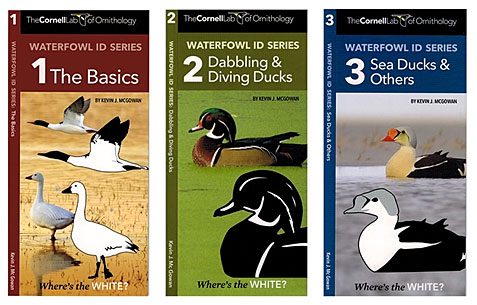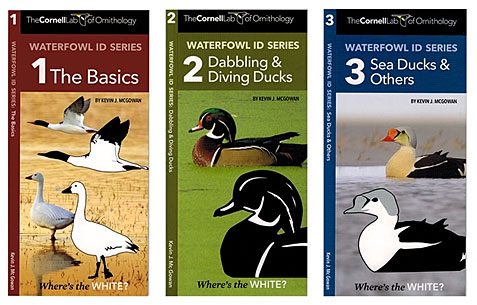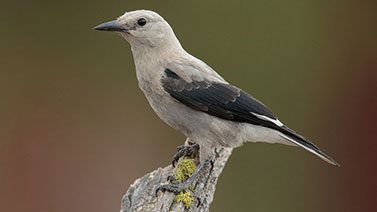Where’s the White? A Simple Question can be the Key in Waterfowl ID
October 7, 2015

From the Autumn 2015 issue of Living Bird magazine.
Ducks can be confusing to identify, especially on those gray autumn days when mixed waterfowl bobbing on the waves all seem to have the same general shape and plumage. Instead of puzzling over bill shape or parsing out green head markings and blue patches on the upperwing coverts, the Cornell Lab of Ornithology’s Kevin McGowan boils waterfowl identification down to one simple question: Where’s the white?
McGowan says that if you can see where the white is on a duck, you stand a good chance of correctly identifying the species.
“When you’re looking at a group of waterfowl on a lake, it is easy to be overwhelmed,” says McGowan. “Pick out an individual, which is key, then focus on the markings that are easiest to pick out. In the case of waterfowl at a distance, that means looking for the pattern of white on the bird. The white markings usually stand out.”
McGowan, a project manager for distance learning in bird biology, developed this unique method for his bird ID webinars. His five-part series on waterfowl identification for beginners has become one of the Cornell Lab’s most popular online course offerings.
Teasing Out a Teal
As an example of putting his “Where’s the White?” method to use, McGowan offers the Green-winged Teal—a small dabbler that’s similar in shape and color pattern to Northern Shoveler and American Wigeon.
The diagonal white stripe running up toward a Green-winged Teal’s shoulder stands out, even at a distance. The Northern Shoveler has a prominent white patch near its rump and a fully white breast. The American Wigeon lacks any white in its chest area and also has a white crown.
By focusing on white markings on these duck species, the unique pattern of the Green-winged Teal becomes obvious.
Putting it All Together
McGowan stresses that all the features of a bird—such as shape, color pattern, behavior, habitat, range, and call—are useful in identifying a species. In many cases birders have to use several different clues at once.
“To me, identification is like putting together the pieces of a jigsaw puzzle,” he says. “The more familiar you become with each species, the quicker you can assemble those pieces in your mind.”
But a white stripe on the wing or white patch on the rump can be one of the most important, if often overlooked, pieces. “All male dabbling ducks can be distinguished by the arrangement of their white patches alone,” McGowan says.
Where’s the White? Waterfowl ID Foldouts



–>
Helpful Resources
Be a Better Birder: Duck and Waterfowl Identification
This self-paced, online course is designed to help you identify ducks, geese, swans, loons, grebes, and more. Each self-paced lesson features a video tutorial, followed by exercises and quizzes designed to help you build ID skills. In this class, you will learn:
- How to use the “Where is the White?” technique for quick IDs
- How to tell the dabblers from the divers from behavioral cues
- Keys to ID for all common North American waterfowl
Where’s the White? Waterfowl ID Foldouts



–>
Helpful Resources
Be a Better Birder: Duck and Waterfowl Identification
This self-paced, online course is designed to help you identify ducks, geese, swans, loons, grebes, and more. Each self-paced lesson features a video tutorial, followed by exercises and quizzes designed to help you build ID skills. In this class, you will learn:
- How to use the “Where is the White?” technique for quick IDs
- How to tell the dabblers from the divers from behavioral cues
- Keys to ID for all common North American waterfowl
Be a Better Birder: Duck and Waterfowl Identification is available at Bird Academy, where you will find lots of other courses all about birds.
Where’s the White? Waterfowl ID Foldouts




All About Birds is a free resource
Available for everyone,
funded by donors like you











